Do you have a question about the ZyXEL Communications NBG7510 and is the answer not in the manual?
Introduces the main features and applications of the Zyxel Device, an Ethernet router.
Details the Zyxel Device's capabilities including Internet access, dual-band WiFi, and guest WiFi.
Explains the two available operating modes: Standard (router) mode and AP mode.
Outlines the methods for managing the Zyxel Device, primarily via the Web Configurator.
Provides recommendations for securing and effectively managing the Zyxel Device.
Describes the connection ports located on the side panel of the Zyxel Device.
Explains the LED indicators on the top panel for status and troubleshooting.
Details how to perform a factory reset using the RESET button to restore default settings.
Describes the function of the WiFi/WPS button for quick wireless connection setup.
Provides instructions and specifications for mounting the Zyxel Device on a wall.
Introduces the Web Configurator as an HTML-based management interface.
Step-by-step guide on how to connect to and log into the Web Configurator.
Explains the main parts of the Web Configurator interface: Settings Icon, Layout Icon, Main Window.
Describes the Settings Icon and Navigation Panel for accessing device settings.
Explains how to use the Layout Icon to arrange screen order within the Web Configurator.
Introduces the Wizard screens for configuring time zone and wireless settings.
Guides users through the initial setup process using the Wizard.
Details the step for selecting the user's location time zone during initial setup.
Covers the configuration of the Internet connection mode for the Zyxel Device.
Explains how to configure WiFi settings like SSID and password during quick setup.
Describes the final step where WiFi settings are saved and Internet connection is attempted.
Introduces how to use the Zyxel Device's various features through tutorials.
Provides instructions on how to set up a wired Ethernet connection for Internet access.
Guides users on setting up a WiFi network, connecting notebooks as clients.
Details how to change the default security settings of a WiFi network to more secure options.
Explains how to connect devices to the WiFi network using WPS for secure setup.
Guides on creating a guest WiFi network for visitors with separate SSID and password.
Details creating two guest WiFi networks for different user groups on separate bands.
Covers network security features including firewall rules and MAC address filtering.
Explains how to enable the firewall and create access control list (ACL) rules.
Guides on configuring parental control rules and schedules for Internet usage.
Details how to allow or block devices based on their MAC addresses.
Covers essential device maintenance tasks like firmware upgrade and configuration backup.
Explains how to back up the current device configuration settings to a file.
Details the process of restoring a previously saved configuration file to the device.
Introduces the Rover app and its use for managing the Zyxel Device and WiFi network.
Lists the various capabilities and functions accessible through the Rover app.
Guides on setting up a WiFi network connection between the Rover Router and a repeater.
Provides tutorials for connecting the Rover AP to the Rover Router using wired connections.
Explains how to manage WiFi connection status, settings, and run speed tests via the app.
Describes how to view connected devices and network status from the app's Home screen.
Guides on configuring general WiFi and guest network settings using the Rover app.
Explains how to view and manage connected devices and their WiFi status in the app.
Details how to create and manage parental control schedules for Internet usage via the app.
Covers other app settings like speed tests, app version, and feedback options.
Provides an overview of the Connection Status screen in the Web Configurator.
Enables viewing the network connection status of the Zyxel Device and its clients.
Allows users to change the icon and name for connected devices for easier identification.
Displays basic system information of the Zyxel Device, including firmware and uptime.
Details how to enable/disable wireless networks and configure SSIDs/passwords.
Guides on configuring guest WiFi networks for 2.4 GHz and 5 GHz bands.
Explains how to view LAN IP address, subnet mask, and DHCP settings.
Provides an interface to view and manage parental control profiles and schedules.
Details the process of creating a new parental control profile for blocking Internet access.
Explains how to define time periods and days for blocking Internet access in a profile.
Discusses Broadband screens for configuring Internet access settings.
Explains key terms and concepts related to broadband connections and IP addressing.
Advises users to gather necessary Internet access settings before configuration.
Covers changing Internet access settings and configuring WAN services.
Guides on configuring a new WAN connection or editing an existing one.
Introduces wireless network setup and security settings on the Zyxel Device.
Explains wireless basics, radio communication, and networking standards.
Details enabling the Wireless LAN, setting SSID, and selecting security modes.
Describes how to configure wireless connections without data encryption or authentication.
Recommends WPA3-SAE, WPA2-PSK, or stronger encryption for enhanced security.
Guides on setting up guest wireless networks with different security types.
Explains how to allow or exclude devices from accessing the network based on MAC address.
Details how to configure WiFi Protected Setup (WPS) for quick and secure wireless connections.
Covers enabling WiFi MultiMedia (WMM) for improved quality of service for multimedia applications.
Allows configuration of advanced wireless features like RTS/CTS Threshold and Preamble.
Enables scanning for wireless LAN channel noises and viewing access point counts.
Provides in-depth discussion of wireless LANs, including WiFi network overview and security.
Introduces Local Area Network (LAN) concepts and managing IP addresses.
Explains key terms and concepts related to LAN, IP addresses, and UPnP.
Guides on setting the LAN IP address, subnet mask, and DHCP server settings.
Details assigning fixed IP addresses to LAN clients based on their MAC addresses.
Explains Universal Plug and Play (UPnP) and how to configure its settings.
Covers configuring IP alias and public static IP for network partitioning.
Describes how to remotely turn on network devices using Wake on LAN (WoL).
Explains how to identify a TFTP server for configuration file download using DHCP.
Provides background information on DHCP setup, DNS server addresses, and LAN TCP/IP.
Provides a step-by-step example of activating UPnP in Windows 10.
Guides users on accessing the Web Configurator easily via Windows 10 Network features.
| DSL WAN | No |
|---|---|
| Ethernet WAN | Yes |
| SIM card slot | - |
| WAN connection type | RJ-45 |
| Wi-Fi band | Dual-band (2.4 GHz / 5 GHz) |
| Wi-Fi standards | 802.11a, Wi-Fi 4 (802.11n), Wi-Fi 5 (802.11ac), Wi-Fi 6 (802.11ax) |
| Top Wi-Fi standard | Wi-Fi 5 (802.11ac) |
| WLAN data transfer rate (max) | 1800 Mbit/s |
| WLAN data transfer rate (first band) | 600 Mbit/s |
| WLAN data transfer rate (second band) | 1200 Mbit/s |
| Cables included | DC, LAN (RJ-45) |
| Output current | 1 A |
| Output voltage | 12 V |
| Power source type | DC |
| Power consumption (typical) | 12 W |
| Storage temperature (T-T) | -30 - 70 °C |
| Operating temperature (T-T) | 0 - 40 °C |
| Operating relative humidity (H-H) | 10 - 90 % |
| Safety | CE-LVD, BSMI |
| Certification | CE, FCC, BSMI, NCC |
| Antennas quantity | 2 |
| Antenna gain level (max) | 5 dBi |
| VPN support | IPSec/PPTP/L2TP |
| Cabling technology | 10/100/1000Base-T(X) |
| Networking standards | IEEE 802.3, IEEE 802.3ab, IEEE 802.3u |
| Ethernet LAN data rates | 10, 100, 1000 Mbit/s |
| Ethernet LAN interface type | Gigabit Ethernet |
| USB 2.0 ports quantity | 1 |
| Ethernet LAN (RJ-45) ports | 5 |
| Number of products included | 1 pc(s) |
| Product type | Tabletop router |
| Product color | Black |
| Harmonized System (HS) code | 85176990 |
| Depth | 157 mm |
|---|---|
| Width | 225 mm |
| Height | 196 mm |
| Weight | 331 g |

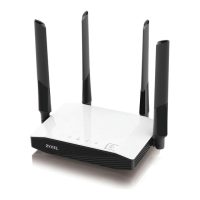
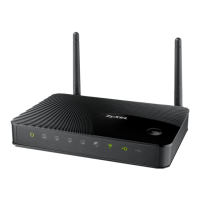
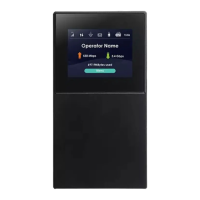


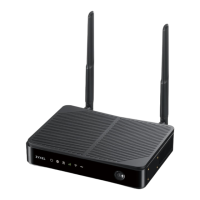

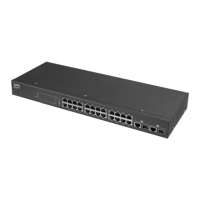
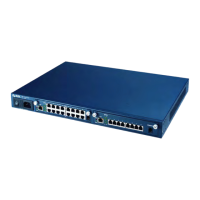

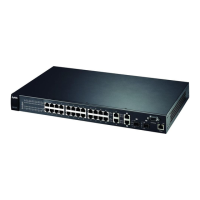
